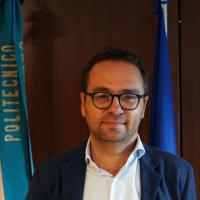How Famous Family Firms Use Their History to Connect With Stakeholders

Tangible items like postcards, photos, old accounting books, or logos and images from brand and advertising campaigns are more than just mementos of a family business’s past. They create the family legacy: a network of meanings that gets transferred and handed down from one generation to the next, fueling passion and attachment to that past.
However, this passion can sometimes create trouble, because feelings run deep among family business members. Sometimes relatives who inherit the family legacy and run the business together may see the family’s longstanding values very differently, to the point where they stop being partners in the business -- like the Dassler brothers (Adidas and Puma) or the Gucci cousins.
The stories and meanings evoked by those material artifacts, rather than the objects themselves, are what really matter for a family legacy, and particularly for a social family legacy. Sometimes earlier generations’ practices and strategies become so cherished that they are too hard to change, which can doom the firm. However, traditions and stories from the past can also catalyze innovation and entrepreneurial commitment in the present. So, how can a family business thrive by embracing its past? Through our research, we found that stories are part of a family business legacy, and communication and storytelling about this legacy can have a huge impact on stakeholders outside the boundaries of the family firm, and on society at large.
Many of the perceptions about family business legacy focus on its impact within the family, from one generation to the next. Our work, which looked at three companies in depth, took a different approach in that we looked at how legacy affects family businesses’ interactions with stakeholders outside the family.
We’ve seen that family firms often use structures such as family business foundations (FBFs) to communicate to stakeholders about their role in society and their activities. This is generally considered to be distinctive in family firms, where outreach activities and philanthropy are ways for the firm to pursue non-financial goals that are crucial for maintaining family values, preserving the reputation of the family, or renewing the value-laden “binding commitments” that link a family business to stakeholders nearby. In many multi-generational family firms, younger generations and business managers feel a sense of legacy and responsibility towards the past.
Our research explored this question: “How do family firms communicate their social legacy to external stakeholders?” In other words, “How do family firms engage in an “outward-oriented social family legacy?”
What We Studied
Our in-depth study of three famous companies and their foundations aimed to build a theory on how family firms communicated and transferred an outward-oriented social family legacy to external stakeholders. The three companies were in three industries: Fondazione Dompé (pharmaceuticals), Fondazione Pirelli (tire manufacturing), and Fondazione Ermenegildo Zegna (fashion). All of them are “iconic” companies in Italy; their names have come to assume cultural significance in society.
We looked at the companies’ FBFs for one important reason: they are flexible organizations that specifically cultivate the good will of outside shareholders through charitable initiatives (e.g., grant-making, philanthropy, etc.) and cultural activities (e.g., art exhibitions, book presentations, etc.) We selected family business foundations that had their own archives, which are collections of physical, historical artifacts from the firm’s or the family’s past. For example, a photograph taken 60 years ago that shows a group of family members or the outside of an industrial facility becomes, over time, a historical artifact showing a specific moment from the past. Making an artifact an authentic sign of the past of an organization is called “historicizing.”
The family firms that created these FBFs are all multi-generational and had family members involved in the ownership and top management of the firm. Plus, all the three FBFs have a rich archive about the family firm history, and/or a corporate museum. We looked at how specific projects and initiatives included and leveraged their historical artifacts.
The three FBFs focus on communicating different legacies, which are shaped by the historical evolution of the family businesses and by their core values. For example, Fondazione Dompé communicates the “entrepreneurial saga” of the family in the business, and connects it to the values of continuous innovation and entrepreneurship. Fondazione Pirelli demonstrates how technical knowledge connects with cultural and human values, a combination that had been sanctioned by Alberto Pirelli (2nd generation) in 1948 in his writings in the “Pirelli” magazine, on whose pages many Italian intellectuals wrote. Fondazione Ermenegildo Zegna instead seeks to communicate how the company cares for the environment and the local community of Trivero, a small town in northern Italy where the Zegna headquarters are still based. All three FBFs have communicated and enhanced the value of their legacy both in their philanthropic and stakeholder engagement activities and in their cultural activities.
What We Learned
We discovered that the FBFs that transferred this outward-oriented social family legacy to external stakeholders used three narrative practices:
Founder Foreshadowing
This connects the deeds of the family business founder performed in the past with the most urgent and critical issues of the contemporary world. For example, Fondazione Pirelli’s efforts in communicating its legacy are rooted in the idea of “technological humanism,” which assumes center stage for interpreting and making sense of the recent trends of society by Pirelli. Engineering expertise and beauty, or technological innovation and human values, are not mutually exclusive but can co-exist. This belief in the necessary reconciliation of technique and culture is at the core of Pirelli’s corporate culture. Fondazione Pirelli sees itself as the custodian of such corporate culture, and traces the origin of this idea back to Alberto Pirelli, son of company founder Giovanni Battista Pirelli. In the first issue of the Pirelli Journal in 1948, a few years after the end of World War II, the younger Pirelli wrote:
“This industry uses a huge number of different products... It employs the greatest variety of machines and tools. It develops scientific laboratories from which progress is fed. How many possibilities then to contribute to the most characteristic evolution of modern life! But if in this magazine we can raise ourselves sometimes even higher, we shall do so with the stark awareness that every contribution to mechanized civilization must be framed in the highest cultural and social values of life.”
Showcasing the Family Legacy Within the Broader Community.
This practice aims to provide a sense of meaning and resonance around the family and the family business spaces. A particular case of this narrative practice is Fondazione Zegna, and specifically its project Zegna Forest. In this project, Fondazione Zegna archivists retrieved documents that showed the exact spots where founder Ermenegildo Zegna planted trees in the 1920s and 1930s in the forests of Trivero, where the headquarter of the family business remains today. Since then the forest around Trivero had been severely damaged by insects. By retracing the site of each tree that the founder planted, it was possible to re-plant new trees and re-create the original forest. This project went beyond archival recollection. According to the words of the Fondazione Zegna chairman, who is also a family member:
“We give emphasis to the continuity of the vision of being attentive to those themes that have been inspired by our founder as part of a global vision of a company that is careful to generate value for the territory, to be focused on the social issues, to be stewards of the environment.”
Weaving Family Legacy with Macro-History
This practice connects the local history of the family or the family firm with an eventful time period in the outside world. In the “Bellezza d’Italia” project, Fondazione Dompé was able to retrace its history and, at the same time, show how it intertwined with the broader societal trends that occurred in post-war Italy. As the Communications Director of the Fondazione Dompé highlighted:
“Bellezza d’Italia can be read from different angles, that range from the history of social costume to the history of design, from journalism to corporate communication. We are talking about an extremely diverse audience… From this point of view, our archive is really serving the community as a whole.”
Retracing past cultural activities shows how Dompé Farmaceutici played a role in shaping the nationwide cultural debate from the 1940s to the 1960s. In this sense, the outward-oriented legacy is not just about prestige and status, but also creating entrepreneurial projects that are meaningful and successful over time, functioning as creators and aggregators of energies and resources. The legacy of Dompé focuses on blending the entrepreneurial spirit of the family with specific care for technological innovation, considered the engine of well-being for human beings.
Takeaways
Our research suggests that business owners and managers, especially at family firms, should think about these four things:
- Legacy is a distinctive asset of family businesses and shouldn’t be relegated to the past. It can contribute to a family firm’s present-day success by creating a profound awareness of what the family business did and meant for people. In an era when good relationships with local stakeholders are more and more important, being able to communicate the legacy of the family business can help people from the outside feel more attached to the family business’ projects. Creating a narrative around the family business’s past can make its founding values visible and credible today, showing that they are the roots of the business, and not just snapshots from the past.
- Systematically collecting historical artifacts can build a powerful repertoire of narratives and stories that can be flexibly used in communicating the family legacy to external stakeholders. Present-day managers in different functions of the family business should consider that their present work might be the “future legacy” of the family business.
- Established practices of heritage management and archive management are important for making your legacy meaningful into the future. Get professional advice to help you organize the flows of documents, curate material artifacts, and connect the archival strategy with the different functions of the business. We have seen that family business foundations (FBFs) can often provide the expertise to do this well.
- Simply having a good collection of artifacts is not enough. These material artifacts need to be embedded in stories that shape the external image of the family business. Stories, and not just material artifacts, resonate with outside stakeholders.
Explore the Research
Building an Outward-Oriented Social Family Legacy: Rhetorical History in Family Business Foundations, Family Business Review, Feb. 17, 2023
EDITOR'S NOTE: This article was produced in partnership with Family Business Review, a leading journal in the field of family business, as part of our mission to bring research-proven insights and practical advice to our readers.
Assistant Professor of Strategy and Enterprising Family / Department of Management, Economics, and Industrial Engineering / Politecnico di Milano
View Profile


Associate Professor of Strategy, Innovation & Family Business / School of Management / Politecnico di Milano
View Profile

Full Professor of Strategic Management and Innovation / Department of Management, Economics, and Industrial Engineering / Politecnico di Milano
View Profile

Professor of Innovation Management / Department of Mechanics, Mathematics, and Management / Politecnico di Bari
View Profile



